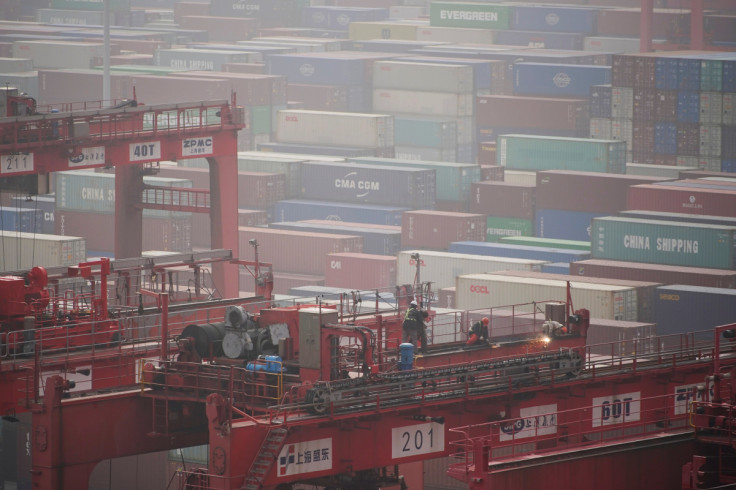China's Exports, Imports Shrink As COVID Curbs, Global Slowdown Jolt Demand

China's exports and imports unexpectedly contracted in October, the first simultaneous slump since May 2020, as surging inflation and rising interest rates hammered global demand while new COVID-19 curbs at home disrupted output and consumption.
The bleak October trade figures highlight the challenge for policymakers in China as exports had been one of the few bright spots for the struggling economy .
Outbound shipments in October shrank 0.3% from a year earlier, a sharp turnaround from a 5.7% gain in September, official data showed on Monday, and well below analysts' expectations for a 4.3% increase. It was the worst performance since May 2020.
The data suggests demand remains frail overall, heaping more pressure on the country's manufacturing sector and threatening any meaningful economic revival in the face of persistent COVID-19 curbs, protracted property weakness and global recession risks.
Chinese exporters weren't even able to capitalise on a further weakening in the yuan currency and the key year-end shopping season, underlining the broadening strains for consumers and businesses worldwide.
"The weak export growth likely reflects both poor external demand as well as the supply disruptions due to COVID outbreaks," said Zhiwei Zhang, chief economist at Pinpoint Asset Management, citing COVID disruptions at the Foxconn factory, a major Apple supplier, in Zhengzhou is one example.
Apple Inc said it expects lower-than-anticipated shipments of high-end iPhone 14 models following a key production cut at a virus-blighted plant in China.
"Looking forward, we think exports will fall further over the coming quarters. The shift in global consumption patterns that pushed up demand for consumer goods during the pandemic will probably continue to unwind," said Zichun Huang, economist at Capital Economics.
"We think that aggressive financial tightening and the drag on real incomes from high inflation will push the global economy into a recession next year."
FURTHER IMPORTS WEAKNESS
Almost three years into the pandemic, China has stuck to a strict COVID-19 containment policy that has exacted a heavy economic toll and caused widespread frustration and fatigue.
Feeble October factory and trade figures suggested the world's second-biggest economy is struggling to get out of the mire in the last quarter of 2022, after it reported a faster-than-anticipated rebound in the third quarter.
Chinese policymakers pledged last week to prioritise economic growth and press on with reforms, easing fears that ideology could take precedence as President Xi Jinping began a new leadership term and disruptive lockdowns continued with no clear exit strategy in sight.
Tepid domestic demand, weighed down by fresh COVID curbs and lockdowns in October as well as the cooling property market, hurt imports too.
Inbound shipments declined 0.7% from a 0.3% gain in September, below a forecast 0.1% increase - the weakest outcome since August 2020.
China's imports of soybeans fell and coal imports slipped, as the strict pandemic measures and a property slump disrupted domestic output.
The overall trade figures resulted in a slightly wider trade surplus of $85.15 billion, compared with $84.74 billion in September, missing a forecast of $95.95 billion.
© Copyright Thomson Reuters 2025. All rights reserved.





















